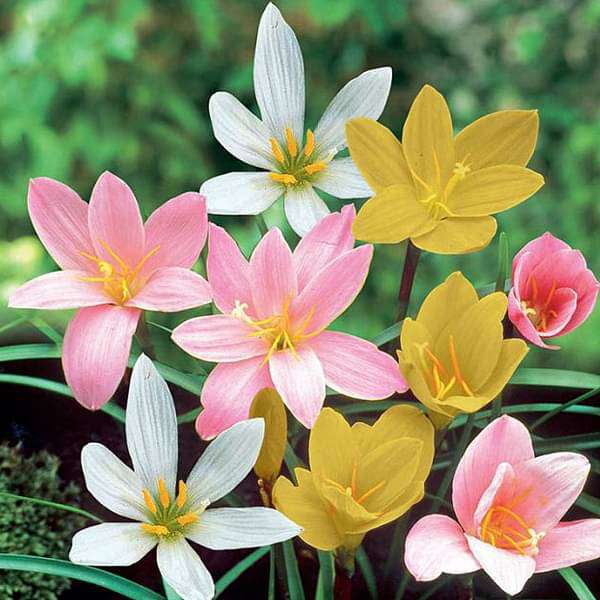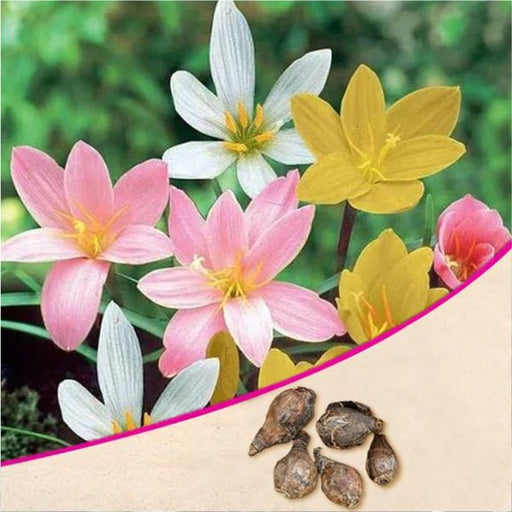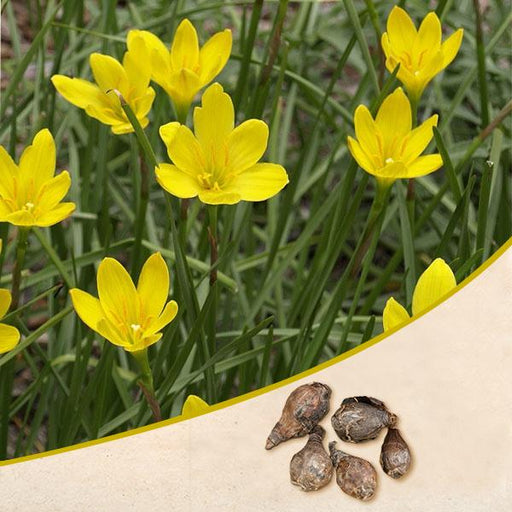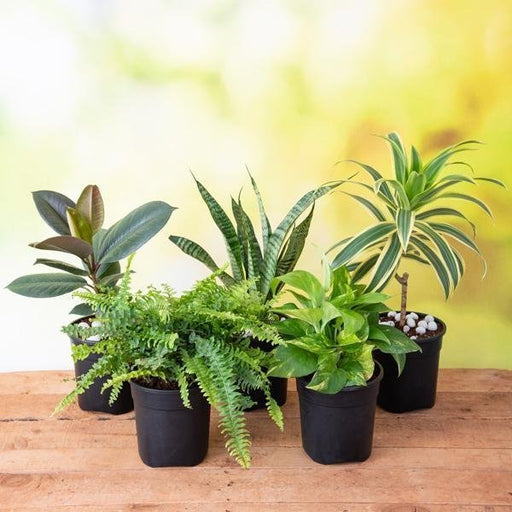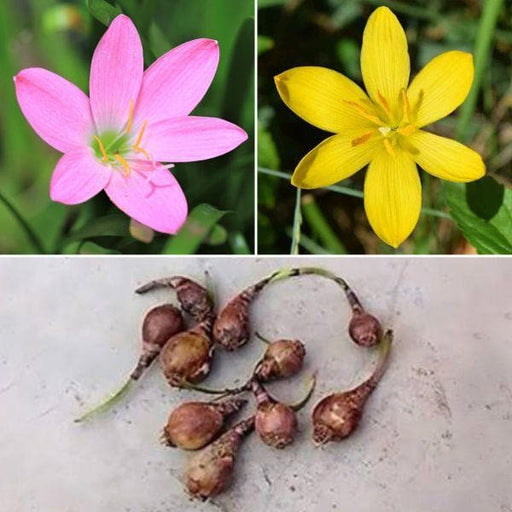Rain Lily Bulbs
Rain lilies grow from bulbs, which are small and easy to plant. Plant them in well-draining soil and water sparingly until they start to sprout.
Pink Rain Lily
Pink rain lilies are a beautiful and delicate addition to any garden. They bloom in late summer and early fall and require very little care.
White Rain Lily
White rain lilies are a classic and elegant choice for any garden. They bloom in early spring and require well-draining soil and full sun.
Yellow Rain Lily
Yellow rain lilies add a pop of bright color to any garden. They bloom in late summer and early fall and prefer well-draining soil.
Rain Lily Care
Rain lilies are easy to care for and require well-draining soil, regular watering, and full sun. They don't require fertilizer and are resistant to pests and diseases.
Rain Lily Meaning
Rain lilies are associated with rebirth and renewal. They are often given as gifts to celebrate new beginnings and fresh starts.
Rain Lily Seeds
Rain lilies can be grown from seeds, but it takes a bit longer than planting bulbs. Sow the seeds in well-draining soil and keep the soil moist until they sprout.
Rain Lily Plant
The rain lily plant is small and delicate, with slender leaves and dainty flowers. It is perfect for adding a touch of whimsy to any garden.
Rain Lily in Pots
Rain lilies can be grown in pots, making them perfect for small gardens or balconies. Plant them in well-draining soil and water sparingly.
Blue Rain Lily
Blue rain lilies are a unique and rare variety of rain lily. They bloom in late summer and early fall and require well-draining soil and full sun.
Red Rain Lily
Red rain lilies are a bold and dramatic choice for any garden. They bloom in late summer and early fall and prefer well-draining soil.
Hardy Rain Lily
Hardy rain lilies are a tough and resilient variety that can withstand harsh weather conditions. They bloom in late summer and early fall and require well-draining soil.
Miniature Rain Lily
Miniature rain lilies are a tiny and adorable variety that can be grown in pots or in the garden. They bloom in early spring and require well-draining soil.
Rain Lily Bloom Time
Rain lilies bloom in late summer and early fall, but some varieties may bloom in early spring or late fall.
Rain Lily Planting Guide
To plant rain lilies, choose a sunny spot with well-draining soil. Plant the bulbs or seeds and water sparingly until they sprout.
Rain Lily Medicinal Uses
Rain lilies have some medicinal properties and are used in traditional medicine to treat a variety of ailments.
Rain Lily Folklore
Rain lilies have a rich folklore associated with them. They are said to bring rain, protect against evil, and bring good luck.
Rain Lily Propagation
Rain lilies can be propagated by dividing the bulbs or by taking stem cuttings.
Rain Lily Uses
Rain lilies are used in landscaping, as cut flowers, and as gifts for special occasions.
Rain Lily Symbolism
Rain lilies symbolize purity, rebirth, and new beginnings. They are often used in wedding bouquets and other celebrations of love and new life.

